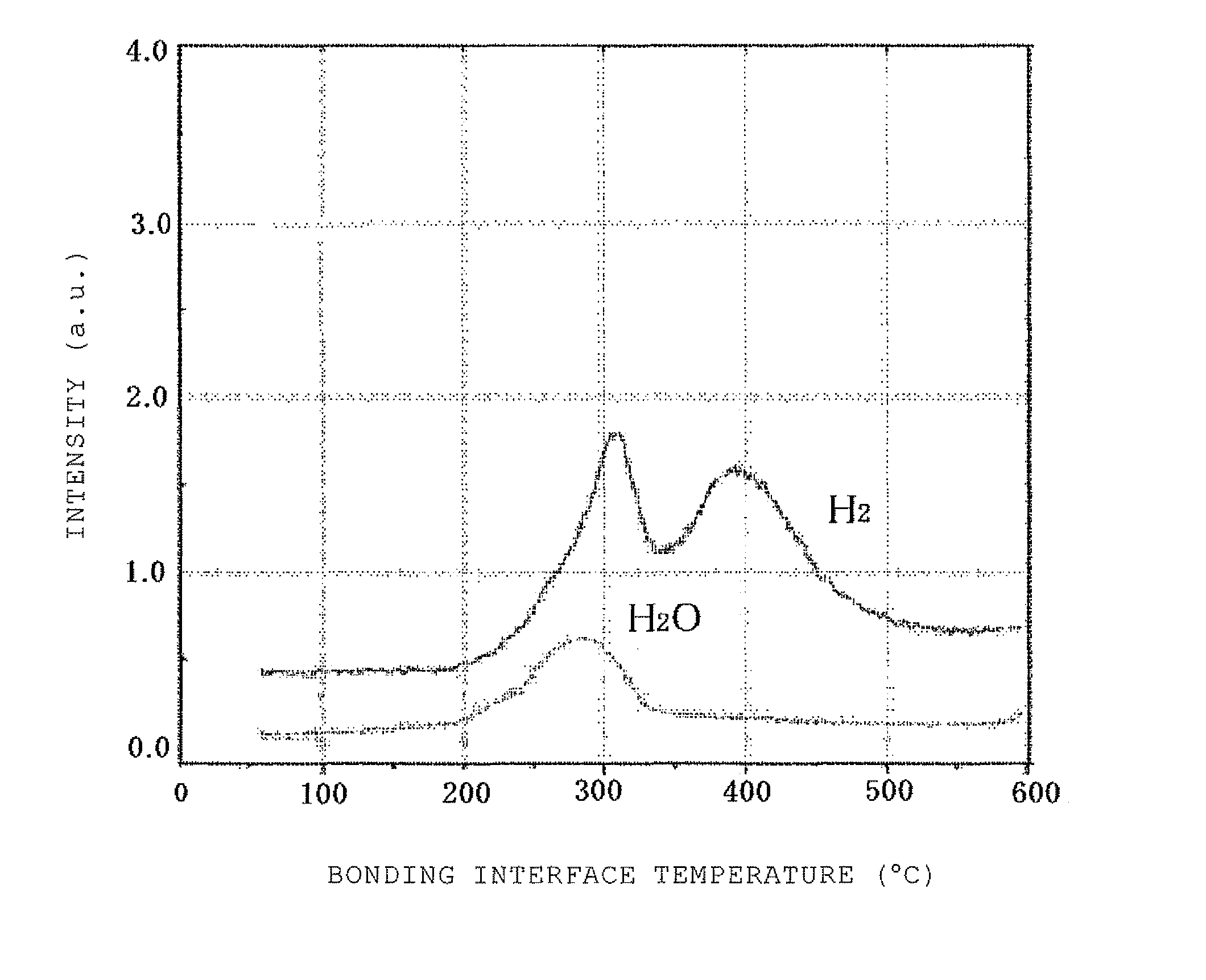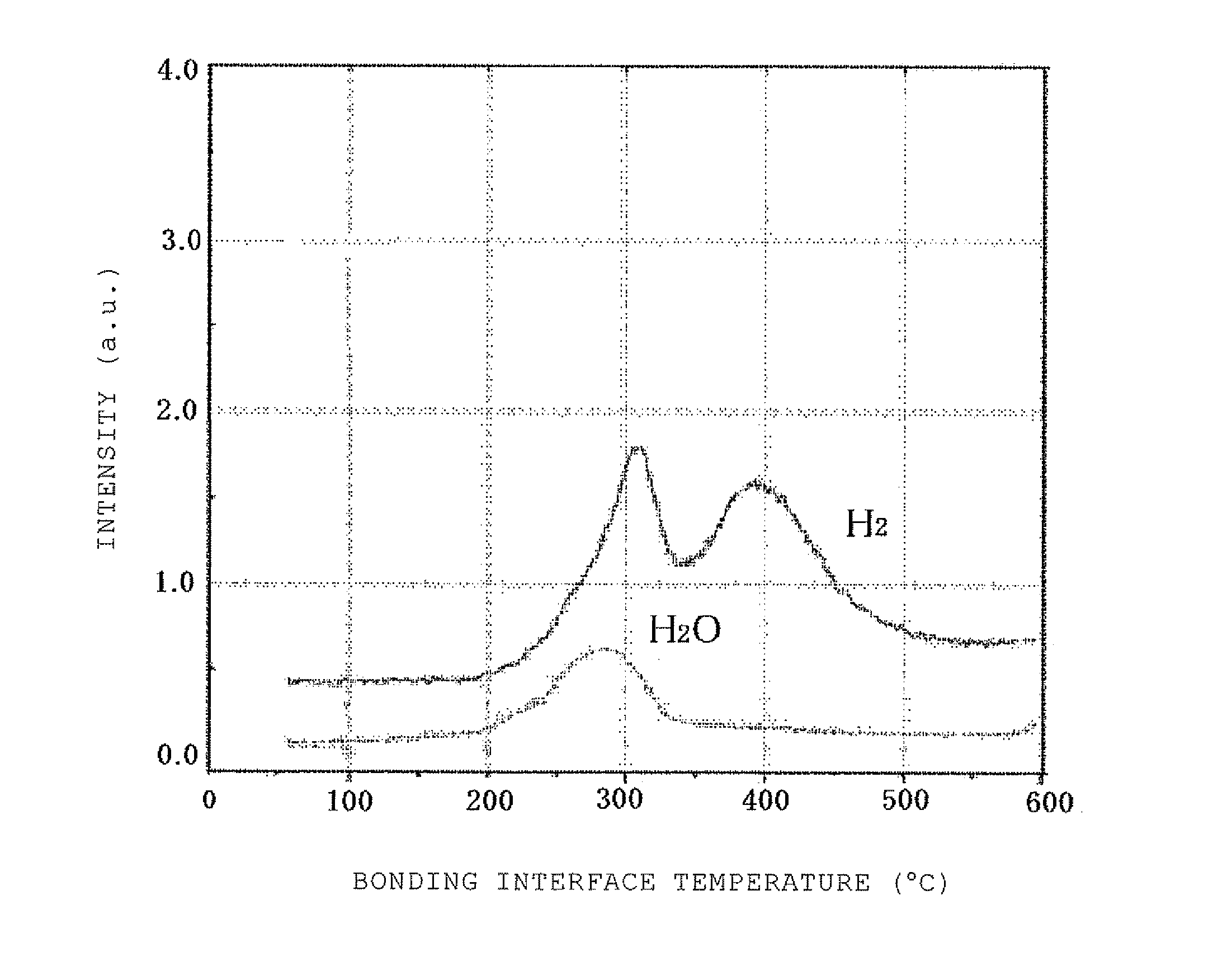Method for manufacturing bonded wafer
a technology of bonded wafers and manufacturing methods, applied in the direction of basic electric elements, electrical apparatus, semiconductor devices, etc., can solve the problems of easy damage, low physical resistance, and thin thickness of silicon, and achieve high bonding strength, suppress the diffusion of ion-implanted hydrogen atoms, and high quality
- Summary
- Abstract
- Description
- Claims
- Application Information
AI Technical Summary
Benefits of technology
Problems solved by technology
Method used
Image
Examples
example 1
[0039]There were prepared 300 silicon single crystal wafers having a diameter of 300 mm. The prepared wafers were divided into the bond wafers and the base wafers. The thermal oxide film having a thickness of 150 nm was formed on the surface of each of the bond wafers. Then, hydrogen ions were implanted inside each of the bond wafers through the thermal oxide film (an implantation energy of 46 keV, and a dose amount of 5×1016 / cm2).
[0040]The bond wafers were thereafter bonded to the base wafers at a room temperature each, and the heat treatment was performed to delaminate each of the bond wafers. At this point, the heat treatment conditions included the pre-annealing having the heat treatments at the first temperature and second temperature. The heat treatment at the first temperature in the pre-annealing was performed at a temperature of 200° C. for 4 hours, and the heat treatment at the second temperature in the pre-annealing was performed at a temperature of 350° C. for 2 hours. T...
example 2
[0045]There were prepared 300 silicon single crystal wafers having a diameter of 300 mm. The prepared wafers were divided into the bond wafers and the base wafers. The thermal oxide film having a thickness of 20 nm was formed on the surface of each of the bond wafers. Then, hydrogen ions were implanted inside each of the bond wafers through the thermal oxide film (an implantation energy of 35 keV, and a dose amount of 5×1016 / cm2).
[0046]The bonding interface of the bond wafers were thereafter subjected to nitrogen plasma treatment for enhancing the bonding strength at a room temperature. Then, the bond wafers were bonded to the base wafers at a room temperature each, and the heat treatment was performed to delaminate each of the bond wafers. At this point, the heat treatment conditions included the pre-annealing having the heat treatments at the first temperature and second temperature. The heat treatment at the first temperature in the pre-annealing was performed at a temperature of...
PUM
| Property | Measurement | Unit |
|---|---|---|
| temperature | aaaaa | aaaaa |
| temperature | aaaaa | aaaaa |
| temperature | aaaaa | aaaaa |
Abstract
Description
Claims
Application Information
 Login to View More
Login to View More - R&D
- Intellectual Property
- Life Sciences
- Materials
- Tech Scout
- Unparalleled Data Quality
- Higher Quality Content
- 60% Fewer Hallucinations
Browse by: Latest US Patents, China's latest patents, Technical Efficacy Thesaurus, Application Domain, Technology Topic, Popular Technical Reports.
© 2025 PatSnap. All rights reserved.Legal|Privacy policy|Modern Slavery Act Transparency Statement|Sitemap|About US| Contact US: help@patsnap.com


